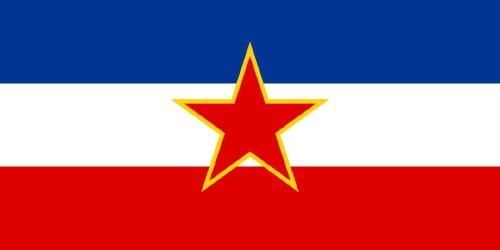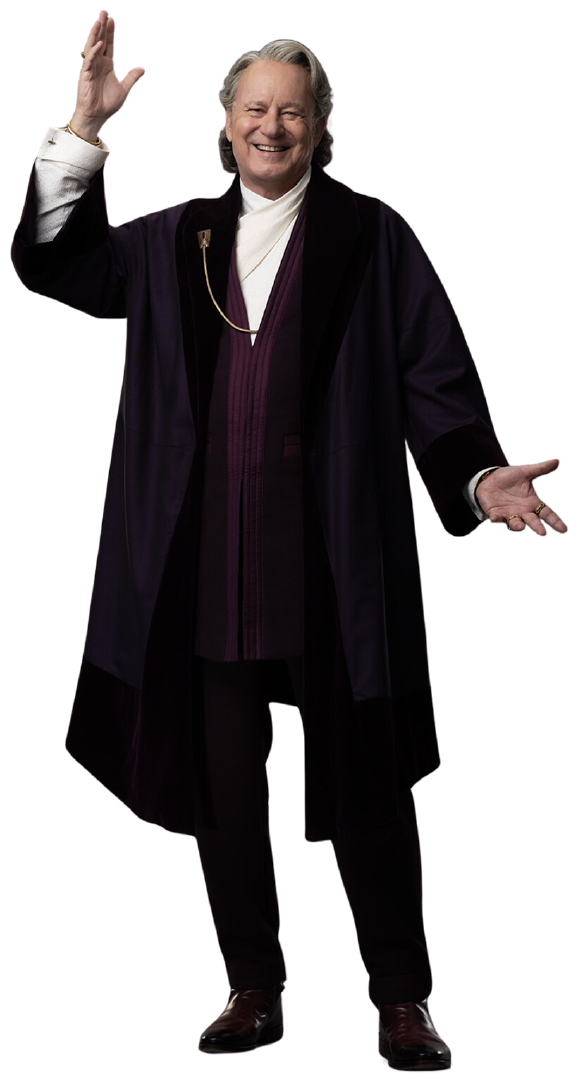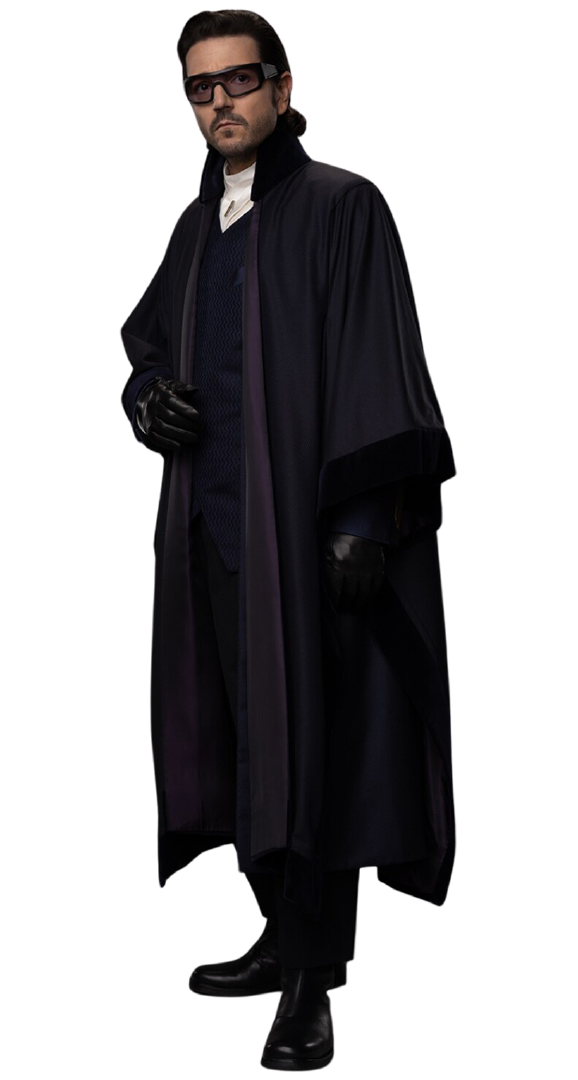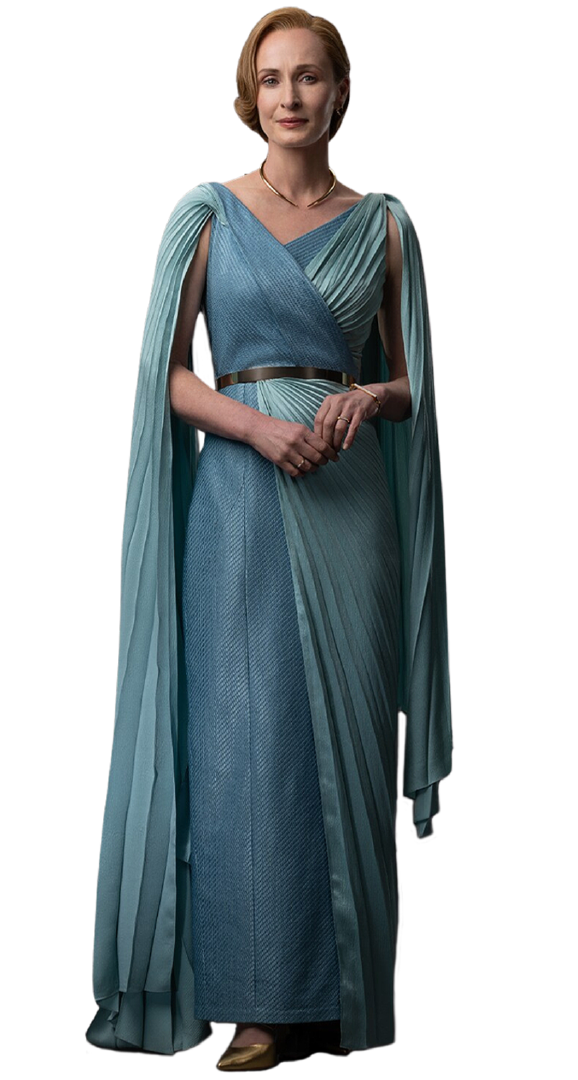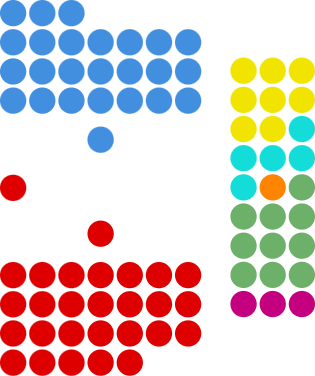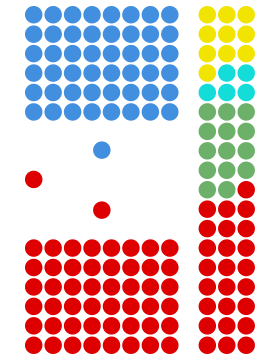| National Factbook |
| Flag: |
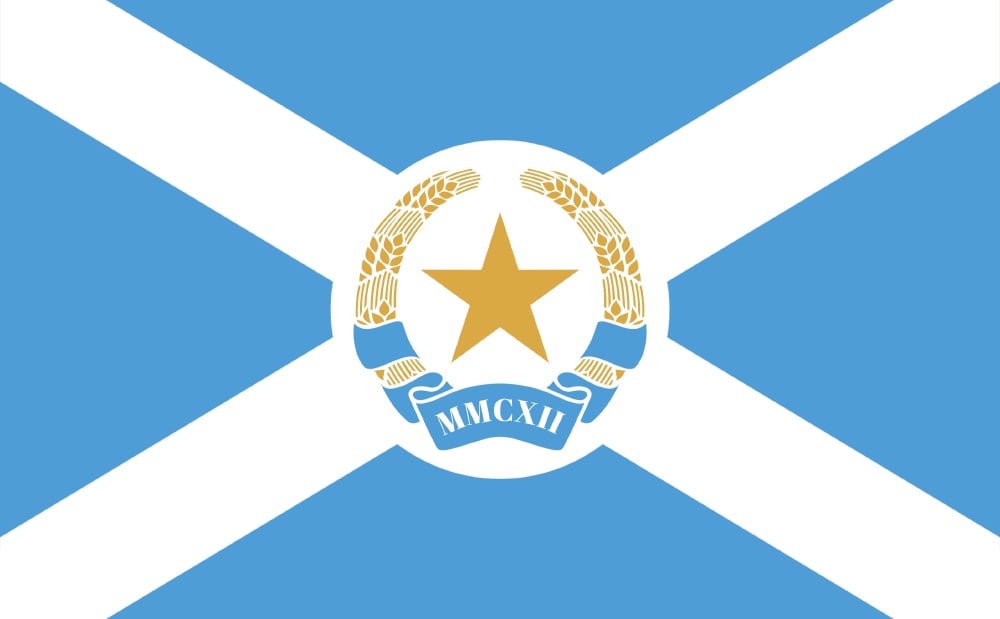
|
| Nation Name: |
Onderia |
| Leader Name: |
Luthen Clark Isaacs |
| Currency: |
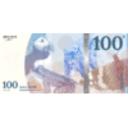
Onderian Gildar |
| National Animal: |

Sumatran Tiger |
| History: |
The Socialist Federal Republic of Onderia (SFR Onderia) was formally established on the 25ᵗʰ of January, 2112, through the historic proclamation known as the Sargai Vondari, a foundational civic document whose title literally translates from Onderian as ‘sovereign declaration’. More than a legal or procedural text, the Sargai Vondari is revered as the symbolic heartbeat of Onderia’s national consciousness—a decisive articulation of self-determination by a people who, though never colonised or externally governed, sought to codify their sovereignty with solemn intent and moral clarity.
The declaration was ratified in the coastal capital of Onderon, a city steeped in trade, culture, and academic tradition. For seventeen days, the council deliberated under the guiding principle of Valashi Tendir, or 'new order of the people', crafting a founding statement that reflected the shared values of unity, egalitarianism, and forward-looking governance.
Unlike many modern nation-states, Onderia did not emerge from the fires of rebellion, nor through decolonisation. The Sargai Vondari thus served as both a legal foundation and a philosophical compass, declaring Onderia a federal parliamentary republic under a bicameral legislature shaped by the Washminster system—an institutional fusion of British Westminster-style parliamentary democracy and American federalism, tailored for the unique character of Onderian society.
The two chambers—the House of Representatives (lower house) and the Senate (upper house)—balance the democratic will of the population with the federated representation of Onderia’s diverse districts and communities. Executive power is held by the prime minister of Onderia, supported by a ministry drawn from the majority in the House of Representatives, while the president of Onderia serves a primarily ceremonial but constitutionally significant role as head of state.
Culturally, Onderia embraced its pluralistic identity. The national language, Onder, reflects a complex linguistic heritage, while English and Indonesian maintain strong cultural and educational presence. The republic is socially progressive, enshrining civil liberties and strong public institutions, especially in healthcare and education. However, longstanding spiritual and philosophical traditions have led to strict regulation of alcohol and recreational drugs, in keeping with the Rovaran Ethic—a public philosophy rooted in wellness, social harmony, and ethical restraint.
Today, the original vellum copy of the Sargai Vondari is displayed in the Hall of Origins in Onderon, preserved in a temperature-controlled glass chamber beneath the Republic’s Parliamentary Dome. School children recite its first line, 'Vondari Sargai, di ashak vome tural Onderin' ('By sovereign word, we awaken the soul of Onderia'), as part of national civics ceremonies. |
| Geography |
| Continent: |
Asia |
| Land Area: |
21,726.09 sq. km |
| Terrain: |
Onderia is situated across multiple islands within the Riau Archipelago and Lingga Islands, in the Riau Islands Province of Indonesia. These territories lie south of Singapore, bordered by the Singapore Strait to the north, the South China Sea to the east, and the island of Sumatra to the west. The archipelago includes significant islands such as Bintan, Batam, Rempang, Galang, Lingga, and Singkep, among numerous smaller islets—all currently under Onderian occupation.
The region is defined by a diverse and intricate geography shaped by geological uplift, coastal processes, and tropical ecological systems. The islands vary in size and form, many featuring deeply indented coastlines marked by bays, inlets, and headlands. This fragmented terrain creates a striking visual landscape blending coastal wetlands, dense lowland forest, and elevated interiors.
Topographically, the region exhibits greater variation than a single island like Batam. While many smaller islands and coastal fringes are relatively low-lying, larger landmasses such as Bintan and Lingga contain prominent hills and even mountainous areas. Land elevations range from sea level up to over 1,100 metres, with Mount Daik on Lingga Island reaching approximately 1,165 metres. These inland highlands introduce significant topographical diversity across the archipelago.
The coastlines are among the region’s most distinctive geographical features. The islands are fringed by a complex network of coves, estuaries, offshore islets, and peninsulas, offering both natural beauty and sheltered harbours. These coastal elements have long supported maritime activity, from traditional fishing to regional trade routes.
Soil quality across the region varies depending on geological origin and local drainage. Volcanic and sedimentary activity has produced fertile soils in well-drained inland areas, supporting agriculture and secondary forest growth. Meanwhile, coastal lowlands and swampy zones often feature heavier, clay-rich, or waterlogged soils, less suitable for cultivation but vital for mangrove ecosystems.
Much of the archipelago was once covered in tropical lowland rainforest. Over time, extensive land clearing for settlements, infrastructure, and industry—particularly on more urbanised islands such as Batam and Bintan—has reduced forest cover. Nevertheless, significant tracts of both primary and secondary forest remain, especially in upland interiors and protected coastal reserves. The Onderian administration has initiated conservation efforts aimed at restoring native flora and fauna and preserving critical ecosystems, including mangroves and hill forests.
The region lacks major rivers but contains numerous small streams, seasonal creeks, and natural drainage channels. These watercourses are particularly active during the wet season, sometimes causing localised flooding in low-lying areas. Urbanised districts under Onderian governance typically employ canals, culverts, and retention basins to manage stormwater and prevent flood damage. |
| Highest Peak: |
Mount Daik, 1,163 meters |
| Lowest Valley: |
Daik River, 2 meters |
| Climate: |
Onderia’s occupied territories within the Riau Archipelago and Lingga Islands experience a tropical rainforest climate (Köppen classification Af), characterised by year-round warmth, high humidity, and abundant rainfall. This equatorial climate results in minimal seasonal temperature variation and supports the region’s lush vegetation and dense coastal forests.
Throughout the year, the region maintains consistently warm temperatures, with little change between seasons. Average daily temperatures typically range from 24°C during cooler nights to around 31°C during the day. Being near the equator, the islands receive intense solar radiation, which keeps the air hot and humid year-round. This stable temperature range is typical of lowland tropical climates.
High humidity is a defining trait across the archipelago. The islands’ proximity to the sea, combined with their tropical forest cover, creates persistent moisture in the atmosphere. Humidity levels regularly exceed 80%, especially during the early morning and evening hours. This constant saturation of moisture contributes to the dense vegetation and amplifies the perceived temperature through a high heat index.
The Riau and Lingga islands experience heavy rainfall year-round, another hallmark of the tropical rainforest climate. Annual rainfall averages between 2,000 and 2,500 millimetres, with precipitation generally spread across all months. That said, there is some seasonal variation, with wetter months typically falling between November and March, coinciding with the northeast monsoon, and relatively drier conditions from June to September.
While winds across the region are usually light due to the equatorial location, the area is seasonally influenced by the Asian monsoon system. Moisture-laden winds from the Indian Ocean and South China Sea arrive during the wet season, contributing to increased rainfall. During the drier months, the prevailing winds tend to be milder, often coming from the south and southeast.
The archipelago enjoys consistent daylight year-round, with sunrise typically around 6:30 am and sunset at approximately 6:30 pm, giving roughly 12 hours of daylight daily. While frequent rainfall often leads to cloud cover—particularly during the wet season—the skies remain partly sunny during drier periods, especially in mid-year months. |
| People & Society |
| Population: |
1,508,903 people |
| Demonym: |
Onderian |
| Demonym Plural: |
Onderians |
| Ethnic Groups: |
Malay - 62.1%
Javanese - 29.8%
Han - 5.5% |
| Languages: |
Onder - 78.4%
English - 56.1%
Indonesian - 3.9% |
| Religions: |
Christianity - 24.9%
Buddhism - 11.9%
Islam - 5.2% |
| Health |
| Life Expectancy: |
92 years |
| Obesity: |
13.1% |
| Alcohol Users: |
7.4% |
| Tobacco Users: |
5.8% |
| Cannabis Users: |
2.1% |
| Hard Drug Users: |
0.2% |
| Economy |
| Description: |
The economy of Onderia is a decentralised socialist-planned economy with strategic sectors under full state control, with regional worker cooperatives playing a significant role in day-to-day production. The system blends elements of market socialism, participatory economics, and central planning, seeking to maximise social welfare and collective ownership while fostering local innovation.
Economic planning is conducted via a hybrid model: a five-year indicative plan crafted by the Federal Planning Commission sets broad production targets and resource allocations, but local cooperatives and communes input through digital participatory platforms. The national currency, the Onderian Gildar (GLD), is stable and non-convertible on global markets, pegged internally to a labour-value index and used for all domestic and international trade. In rural and semi-autonomous cultural republics, many communities operate on non-monetary systems like time-banking, mutual aid networks, and locally issued credits. These are integrated into the national economy through regulated exchange platforms.
Core industries—energy, transportation, heavy manufacturing, natural resources, and banking—are entirely state-owned and managed by federally appointed boards with worker representation. In non-strategic sectors like agriculture, consumer goods, hospitality, and light industry, enterprises are mostly owned and operated by worker cooperatives, supported by state-funded development banks and regional planning councils. Onderia has 'innovation zones' where research is directed by scientific syndicates with state grants but autonomy in design and implementation. Software and artificial intelligence (AI) development are open-source by national law. This is intended to balance technological innovation with collectivist principles.
Every citizen has a guaranteed role, with voluntary labour migration encouraged across republics. The average workweek is 30 hours, with additional time reserved for civic engagement or education. Education is free and lifelong. Workers can retrain into new sectors via state-sponsored programs. Vocational education is closely tied to cooperative needs. Citizens receive monthly 'social dividends' based on cooperative surplus, resource revenue, and productivity. This supplements wages and ensures equitable wealth distribution. |
| Average Yearly Income: |
$118.37 |
| Gross Domestic Product (GDP): |
$1,682,026,969.00 |
| GDP per Capita: |
$1,114.73 |
| Gross National Income (GNI): |
$608,661,225.00 |
| Industries: |
The industrial base of Onderia is built upon the principles of self-sufficiency, decentralised worker ownership, and ecological sustainability, directed by the five-year national plan and executed through a mix of state-owned enterprises (SOEs) and worker cooperatives. The structure of the industrial sector is designed to serve both domestic development goals and strategic independence.
Onderia’s energy sector is focused on clean, sovereign power, with almost total independence from fossil fuels. The sector is entirely state-owned, with democratic oversight by scientific and environmental councils. Nuclear power is the primary source, provided by a network of modern modular thorium and pressurised-water reactors, maintained by the Onderian Nuclear Authority (ONA). Nuclear power plants are distributed across republics to ensure energy decentralisation and redundancy. Solar power is deployed on urban rooftops, cooperative solar farms, and in desert zones of the South-Eastern Cultural Republics. Hydroelectric power is concentrated in mountainous and river-rich republics. Dams are multi-use, providing water management and fishery support. Wind power is operated mainly by coastal cooperatives and rural communes, often integrated with local microgrid systems. Onderia extracts and processes key strategic materials (e.g. rare earths, lithium, iron) with ecological restoration requirements built into operations.
Heavy industry and manufacturing is fully state-owned, and heavy industry in Onderia forms the backbone of infrastructure development, defence, and national transport. Steel and metallurgy is centralised in the Industrial Manufacturing Republic of Malgar (IMR Malgar), where large steel mills and alloy foundries are modernised with emissions-capturing technology, and powered by nuclear energy. Factories operated under the National Industrial Syndicate (NIS) produce essential tools for agriculture, energy, and construction. Onderia is a leader in electric rail systems, with production of trains, trams, and cargo wagons overseen by the National Transport Syndicate (NTS).
Light manufacturing is mostly cooperative-owned, often federated into regional guilds or industrial councils that share tools, training, and innovation. Textiles and garments are made by a mix of traditional craft guilds and automated clothing collectives. Ethical production and local sourcing are mandated by national regulation. Household goods and appliances are produced in modular factories that can switch between goods depending on planned needs. Products are designed for repairability and longevity. Cooperative tech workshops produce small electronics, tools, and open-hardware kits. Many are linked to vocational education centres and youth innovation programs.
Onderia’s agriculture and food production system blends small-scale cooperative farms with regional agro-industrial hubs, overseen by Food Sovereignty Councils. Food processing and preservation is distributed across republics, each with its own preservation plants, grain mills, and fermentation facilities for local diets. Agroecological machinery is produced by regional tool cooperatives, including electric tractors, soil monitors, and smart irrigation systems. Onderia develops eco-safe packaging and materials using local organic waste and agricultural byproducts.
Science is emerging as a strategic focus, coordinated by the National Institute for Technological Sovereignty (NITS), which supports open-source innovation in digital infrastructure, artificial intelligence (AI), and space technology. Electronics and semiconductor fabrication is undertaken by innovation zones with syndicate-run fabrication facilities that specialise in low-power chips for civil and research use. All government systems and research infrastructure run on open-source platforms. AI development is decentralised and democratised through public code repositories. The Onderian Aerospace Syndicate (OAS) produces observation satellites, orbital infrastructure, and launch systems in cooperation with the Air Force.
Closely tied to the Onderian Maritime Force (OMF), the maritime and riverine sector produces both military and civilian vessels, as well as fishing and environmental protection equipment. Shipbuilding installations are located in coastal industrial hubs, producing multi-use vessels like research ships, electric cargo barges, and fast patrol craft. Maritime infrastructure includes port construction, dredging, coastal wind platforms, and oceanic monitoring stations. Sustainable fishing gear is developed with input from marine biologists and fishing cooperatives to support eco-conscious harvesting. |
| Military |
| History: |
The Onderian Defence Force (ODF) serve as the unified defence organisation of Onderia, structured to uphold national sovereignty, territorial integrity, and the principles of anti-imperialist defence. Rooted in the republic’s collectivist values, the ODF prioritises deterrence, strategic self-reliance, and civilian-military integration. Military service is voluntary, but civic-military education is a key element of secondary schooling, and all citizens may be mobilised in times of national emergency. Onderia’s military philosophy is rooted in 'defensive internationalism'—the belief that armed forces exist to protect national independence without engaging in expansionism or foreign interventionism. All branches are required to integrate closely with civilian infrastructure, with overlapping responsibilities in logistics, engineering, and emergency response.
The Onderian Ground Force (OGF) is the largest branch of the ODF, responsible for land-based defence and internal territorial protection. It is structured around regional defence commands that align with the country's federal organisation, ensuring swift and decentralised mobilisation. It is heavily decentralised with emphasis on combined-arms brigades, each integrated with armoured, infantry, drone, and engineering units. Domestically produced infantry vehicles, modular battle tanks, and autonomous drone support systems form the backbone of ground capabilities. Each republic maintains a People’s Defence Reserve, composed of trained volunteers and veterans, embedded into local communities for civil defence, disaster relief, and asymmetric resistance.
The Onderian Air Force (OAF) oversees aerospace operations, including air defence, strategic reconnaissance, and space surveillance. It maintains both atmospheric and orbital capabilities, reflecting Onderia’s strategic investment in technological self-reliance. Its capabilities includes manned fighter squadrons, unmanned aerial systems (UAS), anti-aircraft missile grids, and early-warning radar networks. Orbital assets include small satellites for communications, meteorology, and surveillance. The OAF works closely with scientific syndicates and cooperative tech institutes to develop open-source avionics and AI-assisted piloting systems.
The Onderian Maritime Force (OMF) serves as both navy and coast guard, charged with safeguarding Onderia’s maritime interests, trade routes, and sovereign waters. The OMF primarily consists coastal defence vessels, fast-attack craft, missile boats, and modular multirole ships for patrol and logistics. Submarine operations are limited to defensive coastal subs. Under the OMF is the Onderian Marine Corps (OMC), which operates under naval command but has independent expeditionary and amphibious capabilities. Trained in amphibious warfare, civil relief, and anti-smuggling operations, the OMC is a compact, elite component designed for rapid deployment in both coastal and riverine environments.
Onderia maintains a publicly owned defence-industrial complex, overseen by the Onderian Defence Cooperative Union (ODCU), which coordinates with worker-run factories and scientific institutions to supply all branches with domestically produced arms, vehicles, and cyber systems. Arms exports are limited and tightly controlled, focused on humanitarian defence aid to aligned states and liberation movements. Cyber is a growing focus of the ODF, with dedicated cyber units embedded in all branches, coordinated through the Onderian Signals and Cyber Syndicate (OSCS). |
| Soldiers: |
133,732 |
| Tanks: |
8,713 |
| Aircraft: |
428 |
| Ships: |
86 |
| Missiles: |
0 |
| Nuclear Weapons: |
0 |
| Last Updated: 05/25/2025 08:44 pm |


